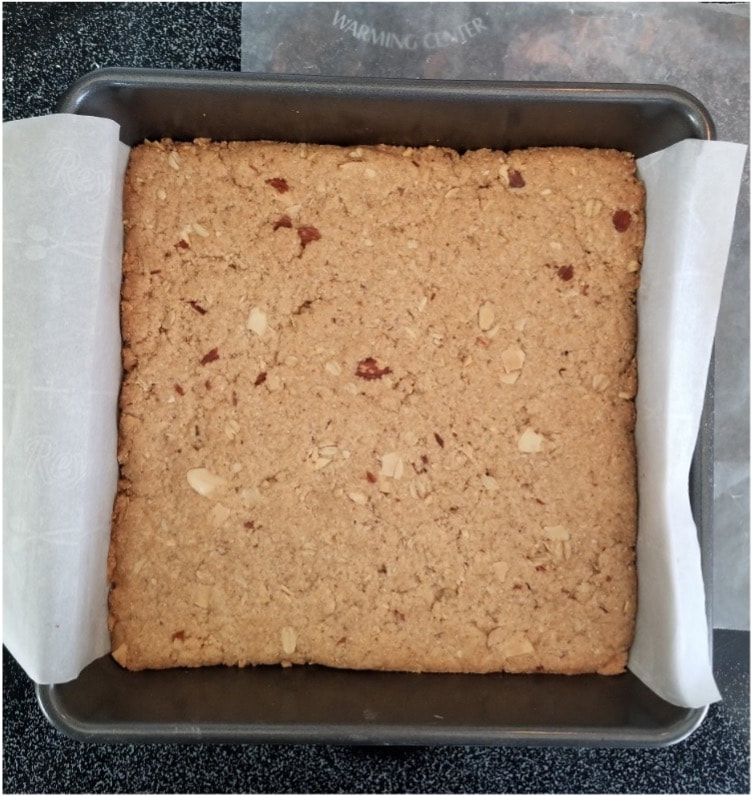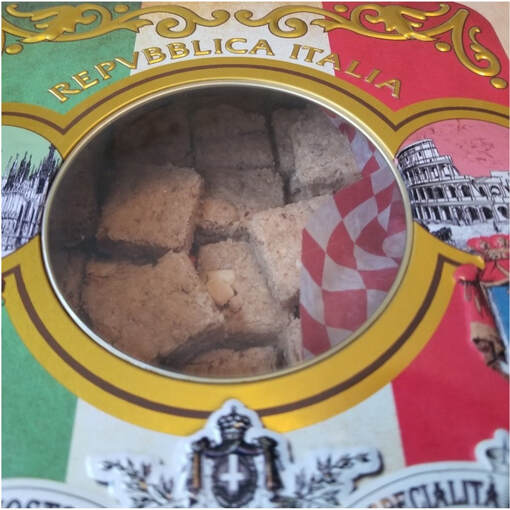Though shortbread is found throughout the tea-drinking British Commonwealth, it is associated most closely with Scotland. In my research on shortbread, I found a real gem of a website called Historic UK which has both intriguing articles on many British topics and a searchable database of historic accommodations including castles, bed and breakfasts, county hotels and canal boats. Their article, “The History of Scottish Shortbread,” gives a good recipe and lays a pretty good argument for Mary, Queen of Scots, bringing a shortbread-like cookie from the French court. It is a quick, fun read, here: The History of Scottish shortbread . For the anglophiles among us, we’ll want to bookmark their website and take a fantasy trip through British lore and castles while having our tea and shortbread break.
As much as I love plain shortbread, I am a baker who can’t leave well enough alone. The traditional shortbread ratio is roughly one part sugar, two parts butter, to three parts flour. The texture of shortbread is what sets it apart from a blondie, a butter cookie, or vanilla wafer. Shortbread’s dominant taste should be butter, so here is the time to use the freshest, highest quality butter you can find. This is a good use of the European-style high fat butters. Shortbread is also much less sweet than most cookies. Shortbread recipes do not contain eggs or any leavening. The little holes seen on the surface of shortbread help to keep it from puffing, much like you’d prick a blind-baked pie crust. Pricking with a fork every half inch or so looks pretty and will help the texture. If you happen to have a fancy spiky wheel called a dough docker, it can be used instead of a fork.
I decided to morph these cookies into bars that had a sandy, crumbly texture similar to shortbread. The flavor of almonds and toasted oatmeal, with that slight warming hint of cinnamon, was a hit. Over the course of a few months, I baked batches of them for different occasions and always got rave reviews and requests for the recipe. I love that oats and shortbread, two most Scottish ingredients, have found each other and have been so in love.
I can’t remember exactly when I started toasting the oatmeal along with the almonds but it is a really good idea. The oats not only take on a toasty depth of flavor, they also make them dryer and less likely to add moisture to the bars. I ran across this essay by David Tamarkin at Epicurious.com How to toast oatmeal and why you should. I had usually toasted the oats in the oven, but he also gives a rather poetic description of toasting oats on the stovetop: “When you stand over a stove first thing in the morning, sleepily stirring dry oats in a hot pan, time moves slowly; what feels like five minutes might actually be just one or two. But depending on the heat you’re toasting over—medium-high works for me—toasting grains does take the full five minutes. You’ll know they’re done not by their appearance (the change in color will not be dramatic), but by their smell: the toasty aroma will waft up to you and be unmistakable. When it does, stop—you don’t want the oats to burn.”
Makes 3 dozen 1” squares
Special equipment: baking sheet, metal spatula, medium mixing bowl, food processor or blender or coffee grinder, hand or stand mixer, silicone scraper, 8” or 9” metal square pan, lined with parchment paper, knife or bench scraper, cooling rack
Preheat oven to 350 degrees F
- 1 cup old fashioned oats
- ½ cup sliced almonds
- ½ cup (1 stick) butter, softened
- 2 tablespoons oil such as canola, walnut, or coconut, optional
- 1/3 cup granulated sugar plus a bit extra for sprinkling, if desired
- 1/3 cup brown sugar
- ½ teaspoon vanilla, optional
- 1 cup all-purpose or whole wheat flour or a blend of the two
- ½ teaspoon ground cinnamon, use ¼ teaspoon if using high-quality cinnamon
- ½ teaspoon baking powder
- ¼ teaspoon salt
- Toast oats and almonds: spread oats on two-thirds of a sheet pan. Spread almonds on other third of the sheet pan. (The reason I initially keep them separated is to monitor if the oats or almonds are toasting.) Bake for 5 minutes then stir with metal spatula. Bake for 3 additional minutes or until almonds have toasted to a light tan color and smell fragrant. Turn oven down to 325 degrees F. Cool oats and almonds to room temperature. In blender, coffee grinder, or food processor, grind about ¾ of the oats and almonds until fine.
- In medium mixing bowl, stir together flour, cinnamon, baking powder, and salt, Stir in ground oats and almonds. Stir in remaining oats and almonds. Set aside.
- In mixer bowl, beat butter until light, about 1 minute. Gradually beat in oil, if using, scrape down bowl as needed. Beat in granulated and brown sugars, just until combined. Stir in vanilla, if using. Stir in flour mixture, just until combined.
- Press dough into parchment-lined pan, smoothing top. Sprinkle a little sugar on top, if desired. Prick with fork. Bake for about 20 to 30 minutes, or until edges are golden and the center feels firm when pressed gently. Immediately cut into squares or bars with knife or ideally, with bench scraper. Cool in pan on cooling rack until completely cool. Carefully recut the bars to separate. Store in tightly sealed container at room temperature for up to a week or in the freezer for up to a month.








 RSS Feed
RSS Feed